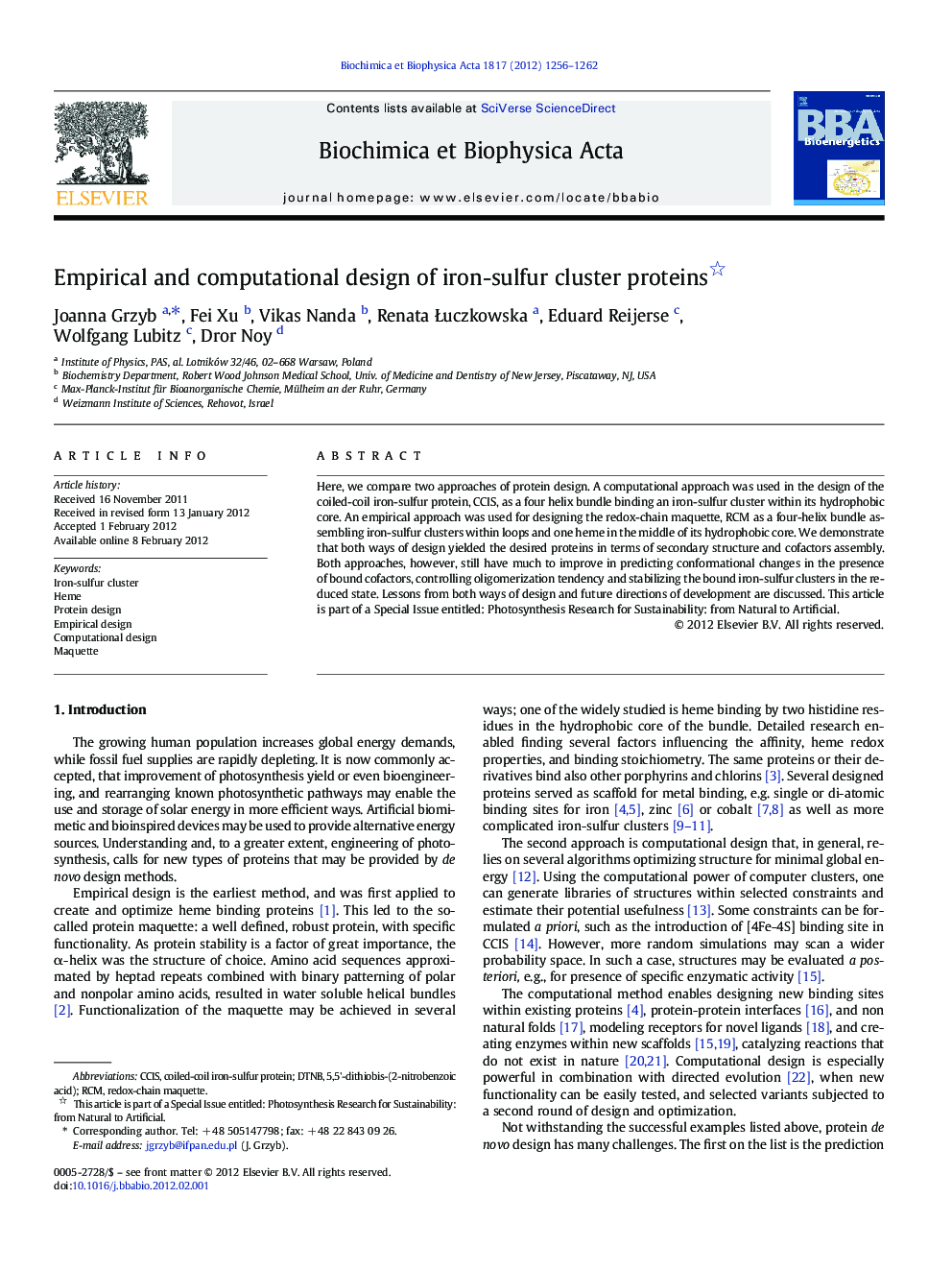| Article ID | Journal | Published Year | Pages | File Type |
|---|---|---|---|---|
| 1942396 | Biochimica et Biophysica Acta (BBA) - Bioenergetics | 2012 | 7 Pages |
Here, we compare two approaches of protein design. A computational approach was used in the design of the coiled-coil iron-sulfur protein, CCIS, as a four helix bundle binding an iron-sulfur cluster within its hydrophobic core. An empirical approach was used for designing the redox-chain maquette, RCM as a four-helix bundle assembling iron-sulfur clusters within loops and one heme in the middle of its hydrophobic core. We demonstrate that both ways of design yielded the desired proteins in terms of secondary structure and cofactors assembly. Both approaches, however, still have much to improve in predicting conformational changes in the presence of bound cofactors, controlling oligomerization tendency and stabilizing the bound iron-sulfur clusters in the reduced state. Lessons from both ways of design and future directions of development are discussed. This article is part of a Special Issue entitled: Photosynthesis Research for Sustainability: from Natural to Artificial.
► An iron-sulfur cluster proteins were designed de novo by two different approaches. ► Designed proteins were tested for correct folding and cofactors assembly. ► First design product of computational methods was better than redesign. ► Protein designed by experimental approach was improved by loop redesign. ► Computational and experimental approach was successful in designing protein folds.
